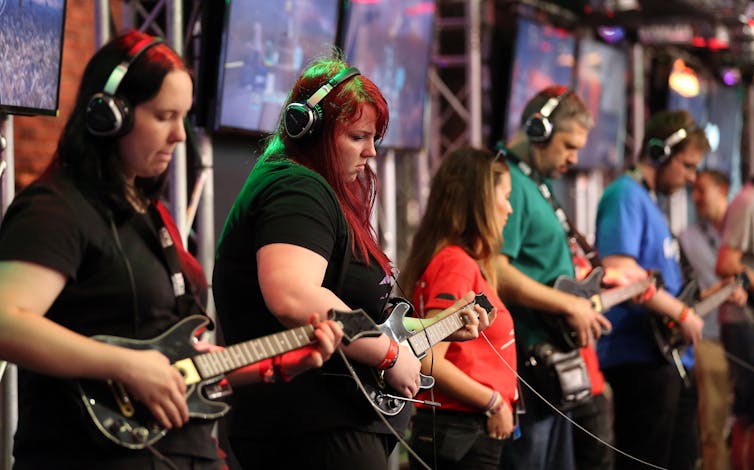Where once the finishing touch for our sofa-based oasis may have been a book or a romantic comedy, consumers are increasingly reaching for their Nintendo Switch or laptops to enjoy the comforting monotony of low stakes and high rewards.
“Cosy gaming”, as it has been dubbed by players, can best be understood by the games associated with it. Chief among these are Animal Crossing: New Horizons, Stardew Valley, The Sims and Spiritfarer.
But while the pandemic may have brought cosy gaming into the mainstream, the trend has a long history rooted in some of the industry’s biggest players’ first forays into digital titles. And its impact has been significant, not only shaping the kinds of games being developed but in overturning outdated gamer stereotypes.
Cosy games are defined by what they omit. Far from presenting players with tough challenges and high stakes, cosy games omit the potential for winning or losing entirely. The clearest objective is to make your own fun.
In Stardew Valley, players tend to a farm. The game doesn’t “end”, it is only over when you eventually stop playing. For the players that have put tens of thousands of hours into the game, it is unclear when this time will finally come.
A history of comfort
Cosy games exploded into popularity during COVID lockdowns. Celebrities including actor Elijah Wood and even US president Joe Biden played Animal Crossing in 2020. But many of these cosy games have a legacy decades in the making.
Although Animal Crossing: New Horizons came out in 2020, the original Animal Crossing game was released in 2001.
Stardew Valley was released in 2016 but it is a spiritual successor to Nintendo’s Harvest Moon, a project from 1998 that the designer originally began to improve his programming skills. Life simulation game The Sims was first released in 2000.
If cosy games have been around since 1998, why has it taken so long for them to become part of popular culture?
One reason is that cosy gaming could be simply considered an evolution – or rebranding – of gaming styles that have existed for decades.
In 2004, game designers Robin Hunicke, Marc LeBlanc and Robert Zubek dubbed gaming for relaxation “submissive” gaming (later reframed as “abnegation” by another designer, James Portnow).
Submissive game play involves games so familiar they require little thought to engage with. Or, in Portnow’s re-framing, so difficult that they require a degree of focus that offers players a break from thinking about the real world. Both require a kind of “zen” mindset that relinquishes the pressures of our real world lives.
This kind of submissive gaming was not that common in 2004. Then, it was most readily associated with the kind of compulsive gamers found in Japanese arcades.

Oliver Berg
As such, by 2010, with the sudden popularity of the Nintendo Wii and mobile gaming, researcher Jesper Juul used the term “casual gaming” to describe the players of these newly popular kinds of games.
The rise of the cosy gamer
As an expert in the study of video games, I don’t think the pandemic is the sole reason for cosy gaming’s delayed popularity. Rather, the answer lies in the rise of representation of this new type of gamer and the platforms around which these gamers can grow a community.
Gaming influencer Cozy Gamer Kat, for example, live streams gameplay for hours on end on the website Twitch, and frequently uploads hour long edits of her game play sessions to YouTube.
While she plays many cosy titles, Kat is also accomplished at games dedicated to difficulty, like Zelda: Breath of the Wild.
Although far from being a viral sensation at the level of her contemporaries Vixella or Sachie (whose videos of similar cosy games can receive millions of views), Cozy Gamer Kat’s dedication to expanding gaming’s safe spaces marks her as a standout figure in the evolution of the gamer identity.
What is new, to my mind, is not the games or the players themselves, but the tools around which this new community of cosy gamers has been built.
Through streaming, people have been able to feel part of a wider community despite not fitting the mould of a stereotypical gamer.




